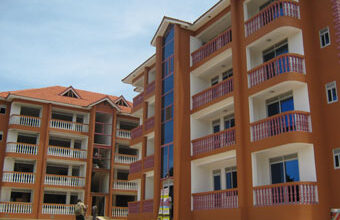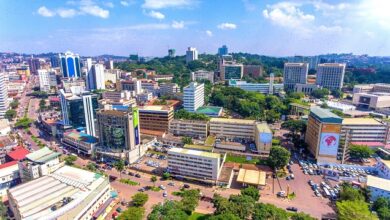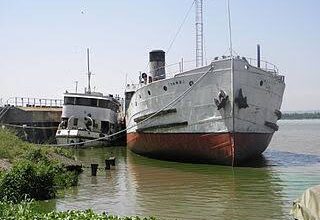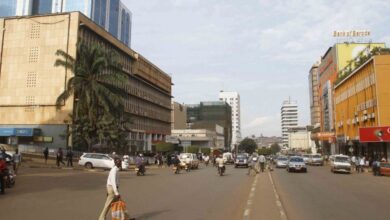13 best places to visit in Bunyoro
It was established in 1980 and covers 8,700 square kilometers.
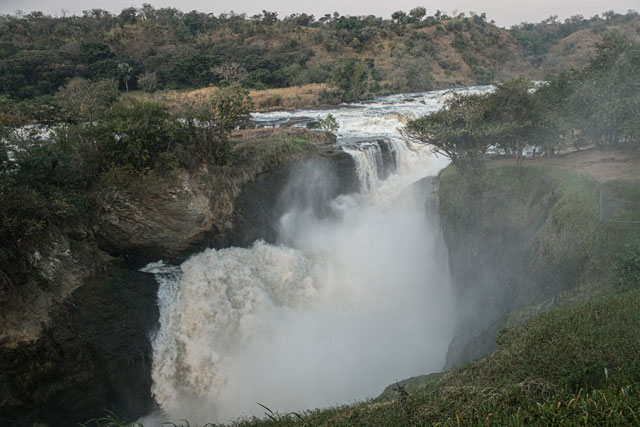
Bunyoro: As you plan to visit Uganda, the Pearl of Africa, during your holiday season, you have not to miss exploring Bunyoro, the country’s tourism heart.
There are numerous hidden tourist sites you shouldn’t miss while on your trip; they include:
- Murchison Falls National Park
The country’s largest national park is the major tourist attraction in the region; it covers 5883 km2 in the six districts of Buliisa, Nwoya, Kiryandongo, Masindi, Packwach, and Oyam.
At Murchison Falls, the Nile squeezes through an eight-meter-wide gorge and plunges with a thunderous roar into the devil’s cauldron, thus creating a dark rainbow.
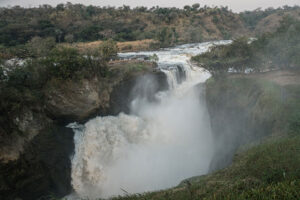
Historical background of Murchison Falls National Park
Information obtained from the Tourist Information and Community Conservation Office in Masindi, indicate that before the park was gazetted by the government in 1926, it was called Bunyoro-Gulu Game Reserve because it had covered some parts of Bunyoro and Gulu, and this took a space of 26 years. Since wild species had accumulated, in 1952 the government decided to upgrade it to a national park.
When Sir Samuel Baker was sent by the Queen of England in 1864 to discover the source of the Nile, he named it Murchison after geologist Roderick Murchison, then President of the Royal Geographical Society.
However, when Iddi Amin ascended to power, he renamed it Kabalega in honor of the fallen great King Kabalega Chwa II of Bunyoro Kitara Kingdom, but when he was overthrown, it adopted its current name, Murchison.
Currently, the park has 76 mammal species, 450 bird species, and a variety of tree species; however, it also has other five game reserves, which include: Bugungu Wildlife Reserve in Buliisa District; Kabwoya Wildlife Reserve in Hoima District; Karuma Wildlife Reserve in Kiryandongo District; Ajai Wildlife Reserve in Arua District; and East Madi Wildlife Reserve in Adjumani District. It’s only 67km from Masindi town to Murchison Falls National Park.
- Kigaju Forest Camp
Kigaju Forest Camp is a leisure and environmentally focused initiative promoting forest conservation through eco-tourism in Kigaju Forest. It lies on 46 acres of land within the Budongo Forest Catchment Area on the western side of Masindi Town, a fifteen-minute drive out of the town and approximately a three-hour drive from the capital Kampala.
The forest conservation initiative is conserving a co-mixed population, especially the endangered chimpanzees, baboons, black and white colobus monkeys, vervet monkeys, red tail monkeys, tree-climbing squirrels, a variety of birds, reptiles, including monitor lizards, pythons, and other small species like antelopes that run into the camp for safety.
It’s the most suitable site for visitors and tourists traveling to and from the main national parks to pass by.
Chimp trekking and birding can be done early in the morning at 06:30 when they are de-nesting and late in the evening when they are nesting. This can be done along the three-kilometer trail, which takes two hours of nature wood. In most cases, de-nesting happens when chimpanzees and other species leave in search of food.
Since in the past Chimps had vacated the area due to a famine outbreak, re-afforestation is being done more, especially of fruit tree species including mangoes, pawpaws, passion fruits, oranges, and cocoa, to safe guard and provide food for a large number of them, thus making them more comfortable.
Kigaju Forest Camp was instituted by Dr. Kidega Tony in the past six years after seeing the opportunity to save the chimps in the area for future generations. Chimps are described as partly human beings and harmless species when not provoked.
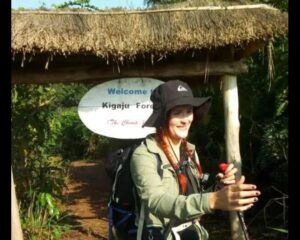
Tourist Sites in Buliisa District
When we talk about tourism in Buliisa district, most people’s minds rush to Murchison Falls National Park, which derives its name from geologist Roderick Murchison, the then President of the Royal Geographical Society. However, while in Buliisa, you can interest yourself in the following:
- Lake Albert (Mwitanzige)
It’s located towards the tip of the western arm of the African Rift Valley, between Uganda and the Democratic Republic of the Congo.
Its home too many aquatic and non-aquatic species, including fish, reptiles, and many others. According to an elder, Kajura Rajab, it obtained the name Mwitanzige in the early 1930s when the dreaded desert locusts invaded the region and destroyed food staff, causing a famine outbreak locally known as kabakuli.
Thousands of people and animals lost their lives during the era. The then Omukama Winyi IV of Bunyoro Kingdom planted trees along the shores of the lake, and the dreaded desert locusts perished in the lake as they attempted to proceed to the DRC.
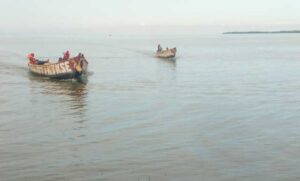
- Butiaba Port
Butiaba is one of the former inland ports, which were very important in the transport sector during colonial times. Butiaba lies below the escarpment named after it. To show its former importance, you will find the buildings that belonged to the East African Railway and Harbors Cooperation. Visit the lagoons, and you will enjoy the cool breeze from Lake Albert.
- Katala and Wanseko landing sites.
Since Buliisa is home to many bird species, including the famous shoebill, you can go bird-watching on the water at the above-mentioned landing sites on Lake Albert. While at Wanseko for bird watching, you can also see a place where Lake Albert joins the Nile.
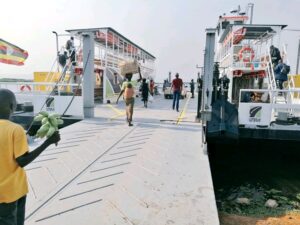
Wanseko-Panyimur-ferry at Wanseko landing landing site/ Courtesy Photo
- Cultural Tourism
Buliisa is home to many ethnic groups, with Bagungu and Alur being the majority. You can visit the Bugungu Heritage and Information Centre to have a look at the Bagungu artifacts as well as get information on the history and cultural heritage of the area.
On special order, you can get the traditional dancers to entertain you. You can also get home-stay services where you are attached to the family to practically feed their culture.
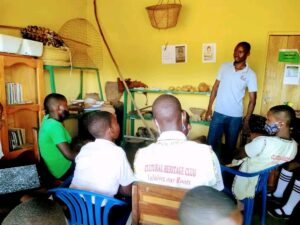
- Fort Magungu
Located in Ngwedo Sub-County and close to the small gate of Murchison Falls National Park, it was used by the Nubians who were fighting on behalf of the British against Omukama Kabalega of Bunyoro Kitara Kingdom.
- The great western rift valley
As you travel to Murchison Falls National Park via the Buliisa route, you will be able to view the amazing and beautiful scenery of this great feature. When you are on top of the escarpment, you will be able to view part of Lake Albert, the Savannah vegetation in the valley, and the Bugungu game reserve. This can be well seen late in the evening when the sun is setting.
Tourist sites in Hoima District
- Katasiha Fort and Caves
They are located about 3km on the Hoima-Biiso road within the Miika Eco Resort Hotel premises.
They were constructed by King Kabalega in 1894 as a hideout and defense line during the war with the British. The river before you reach the site also provided the first line of defense for the King’s army.
After King Kabalega abandoned his palace at Mparo, he extensively used the fort and caves to fight the war. Today, the prestigious historical caves are maintained by the Miika Eco Resort Hotel.
The fierce Katasiha battle
Kabalega mobilized his soldiers to dig 8-foot trenches in protective enclaves, over 300 meters long and running in several directions. The fort was constructed within a period of one month, and he later set up a fight at Katasiha.
Thereafter, Kabalega deployed the elite troops, who were well drilled and supplied with adequate dry rations and other supplies. The fighting was savage, and due to superior weapons and overwhelming members of the invading force, he was overwhelmed, and the fort was fully destroyed in 1894.
Kabalega had selected Katasiha due to its other natural advantages; it had a deep cave with many tunnels that helped him and his army move from one command to another. The nearby River Bigajuuka provided the first-line defense.
To avoid a head-on collision with the enemy, Kabalega retreated to Budongo Forest and adopted mobile guerrilla warfare, drawing the invading force deeper and deeper into the kingdom, away from food and other supplies, while avoiding any form of contact with them.
It appears he chose to wait for his expeditionary army still in Tooro and Busoga to rejoin his forces; he also expected the Baganda to return home within weeks, so he decided to wait on them.
Evasive action, therefore, was a sign of deliberate planning rather than a weakness.
The first few weeks of the invasion, save for the Katasiha battle, were remarkable for the lack of major fighting, so much so that by the end of February 1894, the British, who had marched across southern Bunyoro to Lake Albert, considered one of their main objectives completed.
- Budongo Forest
Budongo Forest is situated in Budongo Sub County and is the biggest mahogany forest found in the whole of East Africa, as well as home to the largest number of chimpanzees throughout Uganda.
Key Activities include: bird watching with over 360 species; chimpanzee trekking; an exciting forest walk; and in addition, there are 290 butterfly species, 130 moth species, 465 tree species, as well as 24 mammals, nine of which are actually primates.
The Budongo Forest Reserve is among the most significant birding destinations in Uganda and is located on the escarpment northeast of the stunning Lake Albert.
Because of Murchison Falls National Park’s biodiversity, the park stands out as the best place for Uganda safaris and short weekend breaks for wildlife and nature lovers.
The major tourist sites within this forest are the Kaniyo Pabidi Ecotourism Site, Busingiro Ecotourism Site in Buliisa District, and Kaniyo Pabidi Ecotourism Site, which are located at the boundaries of Murchison Falls National Park and dominated by mahogany and iron-wood trees. wildlife species within this forest.
- Kibiro salt mining
Kibiro salt processing village is located along the eastern shore of Lake Albert, about 22 km from Hoima town.
Archaeological evidence suggests that salt-making at Kibiro has been practiced for about 700–800 years.
Kibiro salt mining and production, as one of the key economic trade resources of Ancient Bunyoro-Kitara, has sustained the people around for more than 700 years and continues to do so perhaps for posterity from fishing on Lake Albert.
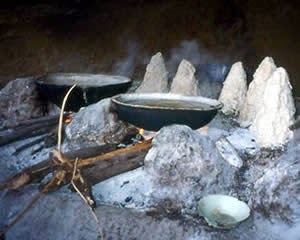
- Mparo tombs
The royal tombs are the burial sites of Bunyoro kings like Omukama Kabalega, who reigned in Bunyoro Kitara in the late 19th century and was later ousted by the British.
Mparo is a village in Hoima district, located in western Uganda. It’s where the Mparo Tombs, one of the royal burial sites of the Bunyoro Kingdom, are found.
The Mparo Tombs are a historical cultural site in the Kingdom where people go to perform rituals and also seek inspiration from Omukama Kabalega.
Kabalega was exiled to the Seychelles in 1899 after resisting British rule. Omukama Kabalega is a key figure in African history and is remembered for resisting colonial rule against the British.
Inside the Mparo royal tombs, there are the king’s spears, bowls, throne, and other personal effects on display. Also buried at the site is the late Sir Tito Winyi IV, father of the current Omukama, Rukirabasaija Agutamba Solomon Gafabusa Iguru, and other kingdom royals.
While at Mparo royal tombs, an individual is not allowed to enter while putting on shoes or should not have engaged in extramarital affairs the night before, while the ladies should not be in periods if they want to access this place.
There is a cone-shaped monument at Mparo royal tombs that was built at the exact spot where Omukama Kabalega met Emin Pasha on September 22, 1877, at Mparo palace. Emin Pasha had come to Bunyoro to convince Omukama Kabalega to allow Bunyoro to be part of British colonial rule, a pledge he later resisted after 12 days. The monument is one of the facilities that are part of the Mparo Royal tombs.
- Kabwoya wildlife reserve
It was established in 1980 and covers 8,700 square kilometers.
The reserve is situated on the western side of the Albertine Rift Valley, between the breathtaking Blue Mountains of the Congo and Lake Albert, and covers an area of 87 square miles.
It is characterized by remote Savannah plains along Lake Albert, and tourists can enjoy the striking views of Lake Albert and the magnificent Blue Mountains of the DRC. This wildlife reserve was gazetted in 1980 and became a wildlife reserve in 2002.
Though Bunyoro is the country’s pearl, human activities such as deforestation, poaching, illegal fishing methods, high birthrates, and bush burning, among others, have greatly affected the above natural resources and tourism industry.
Do you have a story about your community or an opinion to share with us? Email us at theugreports@gmail.com.


